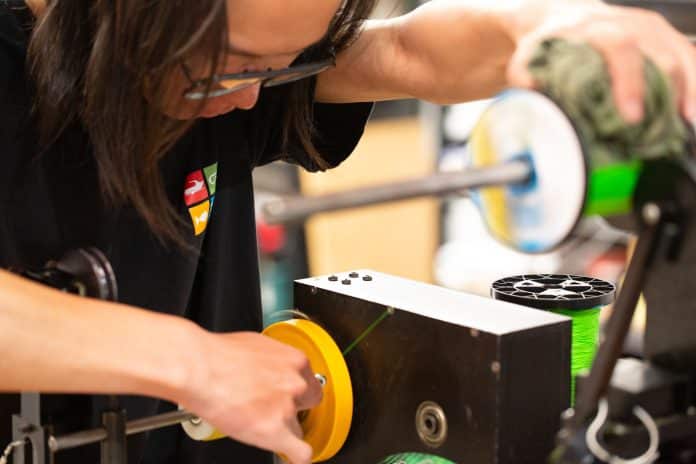Navigating the world of fishing reel capacities is a blend of strange jargon, too many calculations and, at times, guesswork to fill up the spool without overdoing it.
- Do you consider the breaking strength of the line?
- What about the PE (Polyethylene) rating?
- And how does one pass the hurdle of different ways companies express line capacity?
This guide is designed with you in mind; it’s your trusted companion in setting up the perfect line capacity for your fishing essentials.
Different Ways of Measuring and Reporting Spool Capacities
Fishing reel manufacturers often use different methods to measure and report spool capacity. The variances might be confusing at first glance, but don’t worry! Once you’ve got the hang of it, it’s pretty straightforward.
Some manufacturers use the breaking strength of the fishing line, measured in pounds or kilograms, to indicate capacity. For instance, a reel may state that it holds 200 yards of 20lb test line. This means the reel can have 200 yards of line that can bear up to 20 pounds of weight without breaking; by contrast, the popular approach to spool capacity founded by the Japanese: is the PE (Polyethylene) rating. In essence, PE refers to thickness, not strength.
Manufacturer Differences
Naturally, each manufacturer will have their preferred method. That’s just par for the course when you’re dealing with a variety of brands. In the long run, what matters most is understanding the method at hand and translating the given information into practical application.
Some brands provide two or more measurements, making the task more involved. So, always watch for these measurements and learn to translate them to ensure you’ve got the optimal setup.
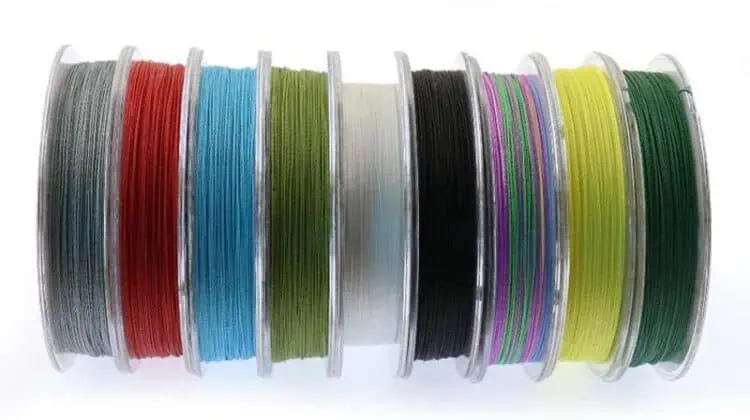
Breaking Down Line Diameter: Poundage vs PE Ratings
Often, line capacities are measured in poundage. It’s the traditional ‘breaking strength’ method. Essentially, this is how much weight the line can support without snapping. For example, a 10lb line is tested to ensure it can hold up to 10 pounds.
A Deep Dive into Poundage
In practical terms, it’s essential to understand that the type of fish and fishing environment will dictate the line poundage you’ll need. Higher-poundage lines are thicker and more durable but can curtail flexibility and casting distance – it’s all about balancing your needs.
You can often get away with less weight than you think. Besides – it’s also about keeping everything in the system balanced – you need to consider what part of your system will give first – and really – that should be the system designed to give first – the drag.
For example – if you put a 100lb braid on a reel that can provide 100lb of drag, then put that on a 50lb rod – what will break first?
Alternatively – take a 100lb braid on a 100lb rod, with a max drag of 50lb – and while nothing should break – you will also not get the maximum stopping power out of the rod.
It’s about balance.
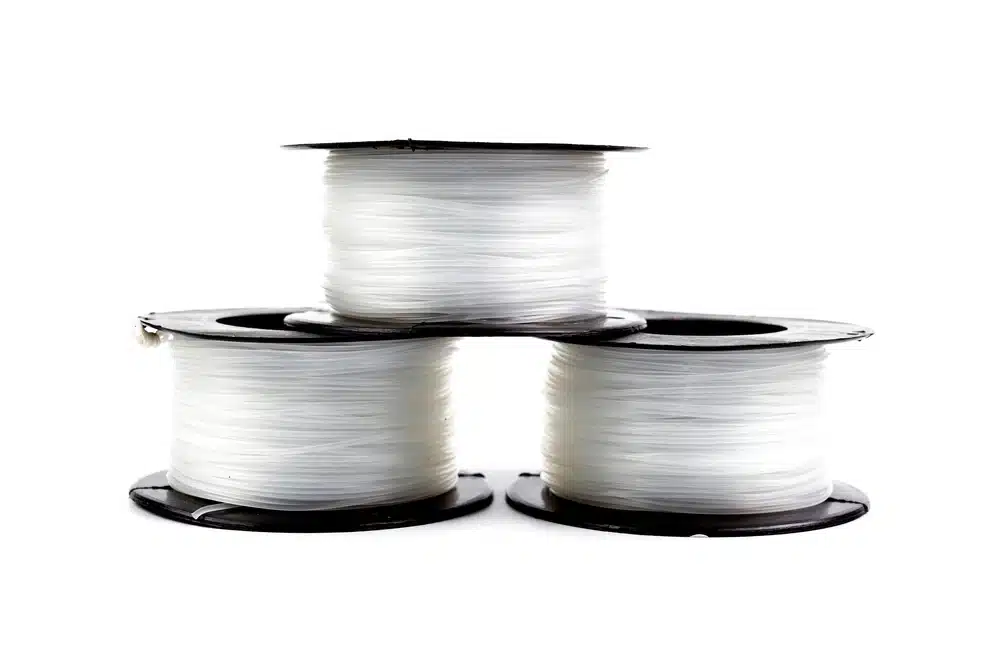
Under-reporting breaking strength
It’s an open secret in the fishing world that manufacturers often underrate their lines’ breaking strength. So, what’s the story behind this practice? Let’s reel in that curiosity of yours.
First off, you’d be amazed by the rigorous testing that goes into ensuring your fishing line withstands the wriggle and the fight of that big catch. In the lab, they simulate various conditions.
Manufacturers intentionally list a lower figure on their products despite an impressive lab-breaking strength. Why? Part of it’s to factor in a little wiggle room for those worst-case fishing situations that we all know can happen (remember the one that got away?). The extra strength ensures your line doesn’t snap when you’ve hooked the big one.
However, the main reason is that most knots that get used ‘reduce’ the breaking strain of the line they are tied into. Salt Strong did a great article about this subject a while ago – https://www.saltstrong.com/articles/fishing-knots/ – it’s worth understanding, for example – that a double uni knot is approximately 30% weaker than an FG Knot. So, it’s worth learning some good knots to ensure you maximise your rig’s effective breaking strength.
Don’t be disheartened by the ‘lower’ strength listed on your line—it’s just there to ensure your fishing tales are about the ones you caught, not those that got away.
Confusion Begins
However, here is where some confusion can start to creep in – just because a reel manufacturer says you can fit 100 yards of 20lb line onto a spool – it doesn’t mean you can. Why is that?
For a start, mono (or fluoro) and braid have vastly different strength-to-diameter ratios. Braid is a lot ‘stronger’ for thinner lines.
Secondly, even within the different types of lines, line thickness can vary for a given breaking strength. This is due to a combination of manufacturing techniques and a variance in how the breaking strength is tested and reported.
So – what is needed – is a system that focuses on the thickness of the line going on to simplify the question of ‘how much can I fit on my spool?’.
Enter – the PE rating.
Understanding PE Ratings
The PE (from PolyEthylene) rating equates to the diameter of the fishing line. It offers a more precise measure of line thickness than poundage, which can help you tailor your setup even more closely to your needs.
It comes from a system known as “gouw”, utilized by the Japanese back in the day for sizing silk thread. This charming method was repurposed for measuring the diameters of monofilament and braided fishing lines. “PE”, if you’re curious, stands for Polyethylene – that’s the material making up the Dynema and Spectra braided lines we often use. One of the perks of PE rating is its consistency. So, even if two lines boasting a 50lb rating break at different strains, their diameters will be identical if they have the same PE rating. A helpful rule of thumb – multiply the PE# by 10 to get an approximated break strain of a braided line: PE4 x 10 = 40lb, for example. But mind you, break strain can fluctuate quite a bit among lines of similar diameter. This is particularly evident in high-quality braids with more strands and a tighter weave. The outcome is a rounder, smoother line with a higher break strain than their lesser-quality, same-diameter counterparts.
Depending on what type of PE (8 vs 4 strands) we are discussing, the poundage can vary quite a bit. So remember – PE is a measure of thickness, not breaking strength.
| Japanese PE | diameter(mm) | 8 strand PE | diameter(mm) | 4 strand PE | diameter(mm) |
|---|---|---|---|---|---|
| PE 0.6 | 0.128mm | 22 lb | 0.120mm | 8 lb | 0.130mm |
| PE 0.8 | 0.148mm | 23 lb | 0.140mm | 10 lb | 0.150mm |
| PE 1.0 | 0.165mm | 25 lb | 0.160mm | – | – |
| PE 1.2 | 0.185mm | 30 lb | 0.180mm | 15 lb | 0.180mm |
| PE 1.5 | 0.205mm | 35 lb | 0.200mm | – | – |
| PE 1.7 | 0.218mm | 40 lb | 0.220mm | – | – |
| PE 2.0 | 0.235mm | 45 lb | 0.230mm | 20 lb | 0.230mm |
| PE 2.5 | 0.260mm | 50 lb | 0.260mm | – | – |
| PE 3.0 | 0.285mm | 55 lb | 0.280mm | 30 lb | 0.280mm |
| PE 3.5 | 0.310mm | 60 lb | 0.300mm | – | – |
| PE 4.0 | 0.330mm | 65 lb | 0.330mm | 40 lb | 0.330mm |
| PE 5.0 | 0.370mm | 75 lb | 0.370mm | 50 lb | 0.360mm |
| PE 6.0 | 0.405mm | 90 lb | 0.400mm | 65 lb | 0.410mm |
| PE 7.0 | 0.435mm | 100 lb | 0.430mm | 80 lb | 0.430mm |
| PE 8.0 | 0.470mm | 110 lb | 0.470mm | 100 lb | 0.460mm |
| PE 9.0 | 0.505mm | 120 lb | 0.490mm | – | – |
| PE 10.0 | 0.535mm | – | – | – | – |
Should I use poundage or PE to decide?
Using poundage or PE when selecting your fishing line depends on your preference and fishing scenario. Both measurements provide valuable information that can be used in different contexts. Let’s break it down, shall we?
In general, poundage offers a straightforward measure of the line’s breaking strength. This is highly valuable when fishing for heavy or large fish, and the line’s resistance to breaking becomes vital. Also, there’s a certain satisfaction knowing you hauled in a 50-pound beast with a line that technically should only hold 20 pounds (although we recommend pushing your luck sparingly!).
On the other hand, PE ratings offer a more nuanced approach. They give you a thorough understanding of the line’s diameter. If you feel more comfortable getting to know the line’s thickness and the sort of gear it suits, then PE ratings would serve you better.
So, consider both the poundage and PE rating. That way, you can gain a more holistic understanding of your line’s capacity.
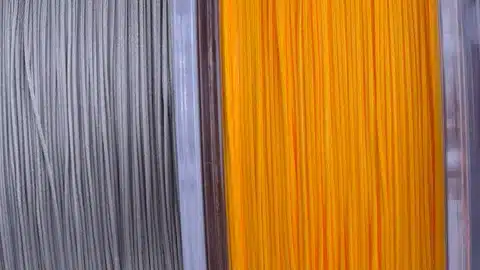
Examples
For example – I recently wanted to re-spool one of my 2500 reels. This is a rig for soft baiting, so I wanted to go light.
For a start – the reel it was going on has a max drag of 5.4 KG. I wanted something over that to ensure that the drag would be the ‘weakest point’ in the setup.
We have Tasline at work – a premium braid for casting. Their ‘8lb’ has an ‘actual average break’ of 14.7lb (6.6kg) at a PE Rating of 0.4 (0.1mm diameter). Without thinking too hard about it, I knew I would easily fit the 150m box onto the reel spool (which has a listed capacity of 240 yards of 10lb).
Possibly a more relevant example for some would be this, though –
Take a bigger electric reel – say the Shimano Beastmaster 9000A – with a stated line capacity of 1030 yards of 80lb. Now, if that’s all they told us, an 80lb line could mean a lot of things – however, the state that’s 80lb Powerpro – which, if you look on their site – has a thickness of 0.43mm.
However – say I want to use some of the braid I have handy – for example – NOEBY Infinite II X8 PE Braid – the 80lb has a diameter of 0.40 – it’s thinner, so I can get more on there (about 1067 yards)!
What if, though, I ‘needed’ 1200 yards of line? I would have to use something even thinner. I could look for a braid that has a thinner diameter but maintains the 80lb rating (being aware the different manufacturers might have different ways of testing this) – or – say, if I had to stay with the NOEBY, I could go down a weight class to something thinner. If I dropped to 50lb (0.30mm thickness), I could get 1233 yards.
How am I doing this maths? Easy – using a calculator – https://www.omnicalculator.com/sports/fishing-reel-line-capacity
It’s important to remember that this is all an estimate – the only way to know is to spool it up. There are a couple of extra factors we need to discuss.

Backing, top shot and tension.
We are getting into the weeds a bit – but – this is important to remember – you are unlikely to get precisely what the spool states onto your reel. If it is that critical, you will need to do some work.
It might be the case that you want to put a mono backing on before your braid. No uncommon. You might be planning to have a top shot for game reels, which will reduce your overall capacity.
One factor that is relevant but hard to quantify is that the more tension you apply to your line, the more you can get on. What tension is the manufacturer using when they test to specify their spools? Who knows? What tension do you spool at?
All these things can affect how much you ultimately get on your spool.
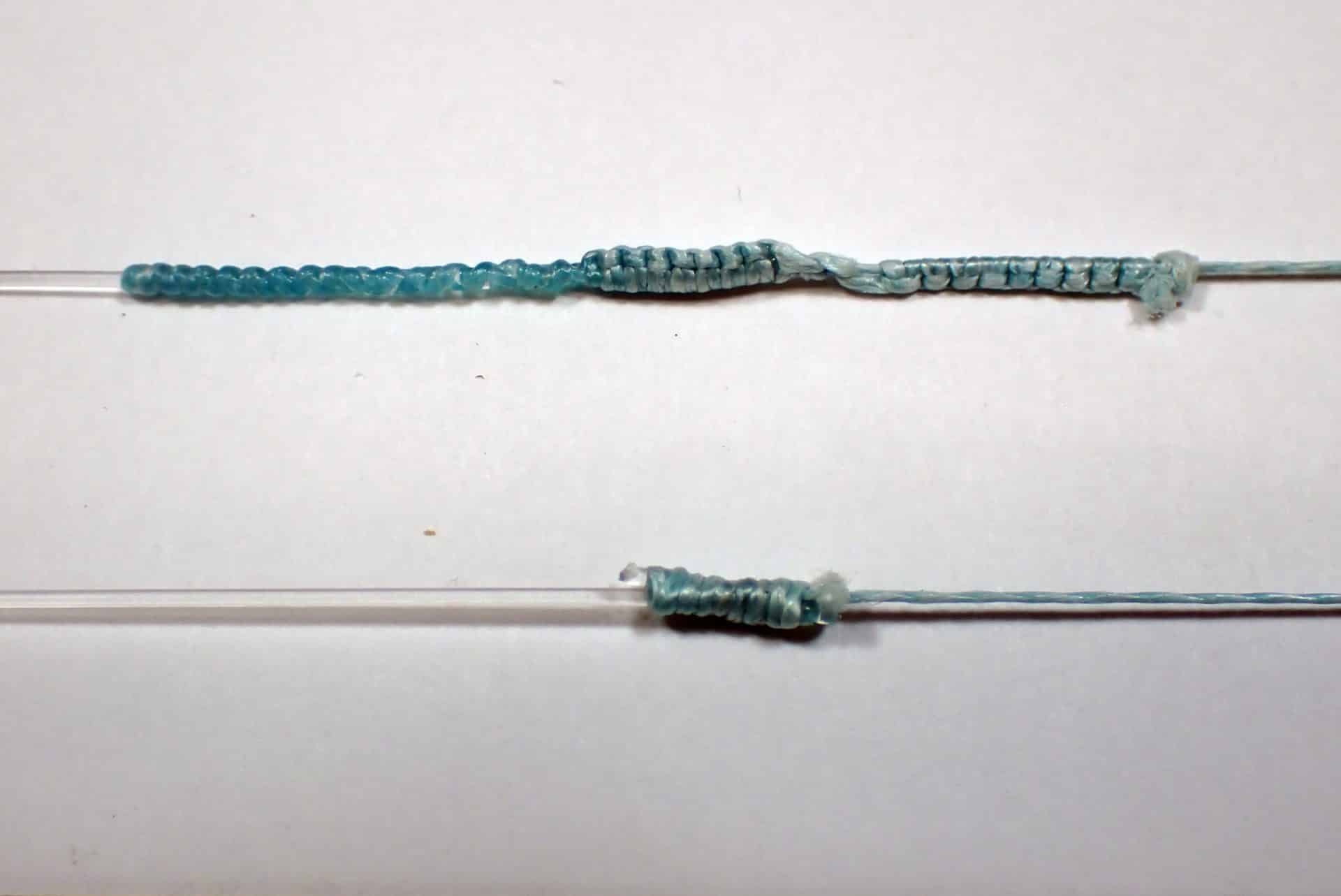
Techniques for Maximising Line Capacity
Now, we’re shifting gears. We’ve discussed the intricacies of calculating spool capacities and unravelled confusing terms like lb breakage weight and PE. It’s time to delve into some clever tricks and techniques fishermen like you, and I use to squeeze every last yard out of their reel spools.
Strategic Winding
It may seem childishly simple, but winding a line on your spool in a perfect flat lay can significantly enhance how much line the spool holds. Misaligned windings or ‘lumps’ in your line can drastically reduce capacity. Thus, having a keen eye for precision and a steady hand – or even better, a line-winding machine – can make a huge difference.
The Art of Mixing Lines
Another tactic to keep up your sleeve is mixing lines. A bulky backing line, followed by a thinner leader or main line, could help you get the best of both worlds – superior capacity and strength. This doesn’t just allow us to pack more line on the reel but also to save a bit of money since we don’t have to fill the entire spool with expensive mainline. Be sure to connect them properly. Nail knots, Albright knots, uni-to-uni knots—pick your weapon wisely.
Always check with the line and reel manufacturers for any specific advice or limitations they might give. Yes, it’s like reading the fine print on contracts, but this could save your day on the waves.
A Nod to Patience and Precision
Maximising our fishing reel’s line capacity isn’t just a matter of stuffing the spool until it’s about to explode. It requires careful planning, strategy, and sometimes inventive tricks. So, as we take another step forward to becoming better anglers, let’s remember one thing – whether it’s winding the line, choosing the right braid, or mixing lines – patience and precision are indeed our best friends.
Next time you set up your fishing reel, remember these tips and see how they transform your fishing experience. Let us create more room on our reels, cast farther, fight longer, and get the most out of our fishing adventures.
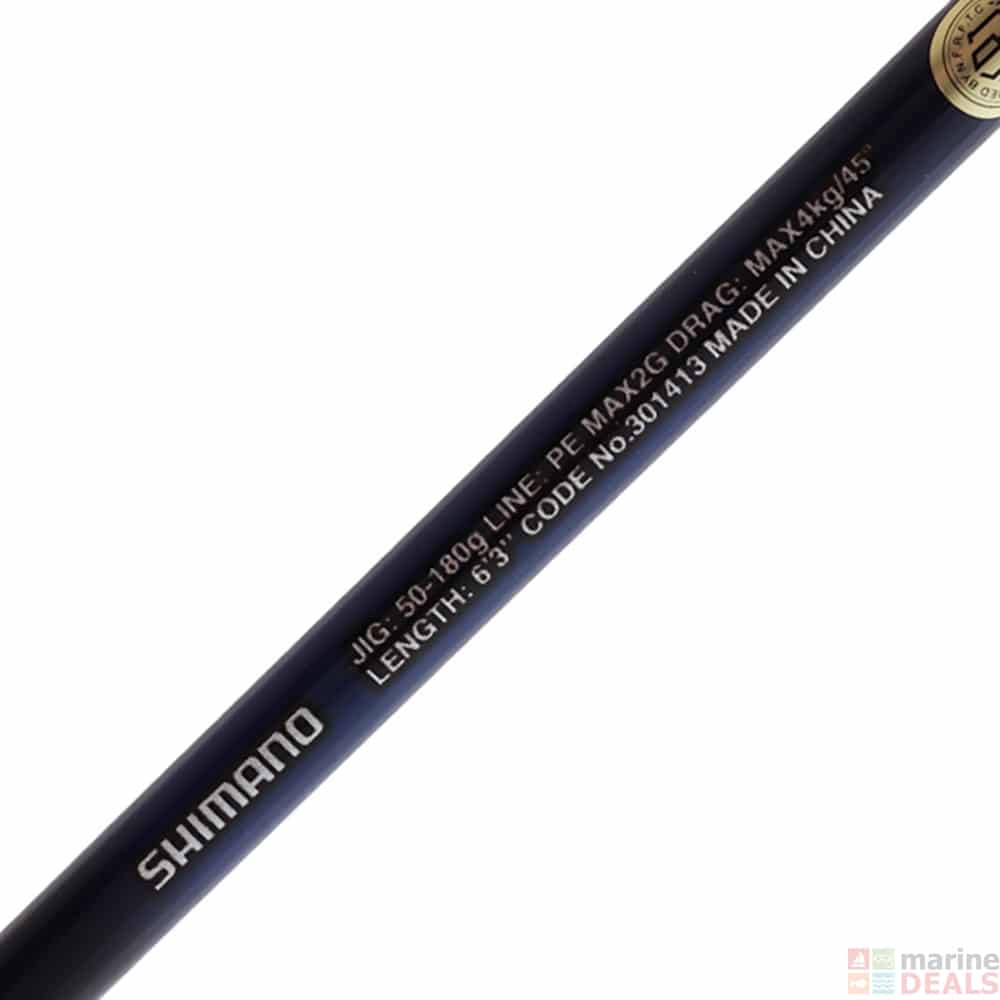
Fishing Rods with PE Ratings?
But wait, a little more confusion to end with!
Some manufacturers are putting our rods with a PE rating on them. But, as we have learn’t – PE is a measure of diameter, not breaking strength – so what gives?
The PE rating on a fishing rod primarily indicates the most suitable line for that particular rod. So, if your fishing rod is noted to have a PE 3 rating, for example, it’s the manufacturer’s way of saying that it performs best with a line that has a strength corresponding to PE 3 (or 15 kg / 30 lb, if you prefer). It’s important to understand – this is just a guide – as the actual breaking strength between two braids of the same PE rating can be quite a bit!
Reading Between the Lines
To throw another spanner in the works, manufacturers sometimes provide a line PE range rather than a fixed rating for their rods. So, you might come across a rod with a PE rating of 1-3, indicating it would work well with a line strength anywhere between PE 1 and PE 3. A broader range allows greater flexibility regarding the line strength you can use with that specific rod.
Ultimately though – many of these rods will be quite specialised – and – when it comes to jigging rods – the ‘deciding’ factor on what size rod to use is determined by the jig weight on the end of the line. Slow Pitch – and the speed at which the rod returns to ‘straight’ after pitching comes to mind.

